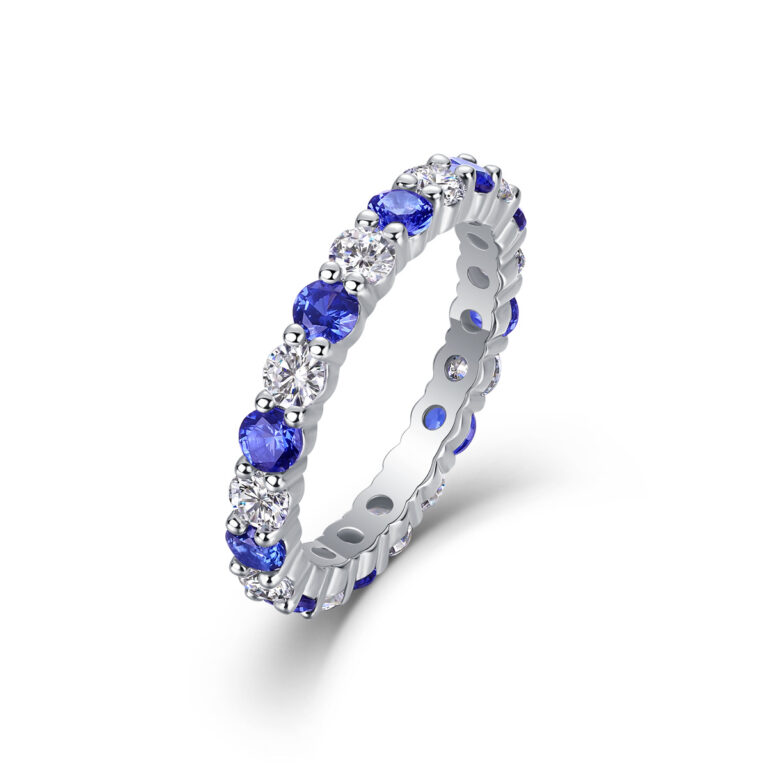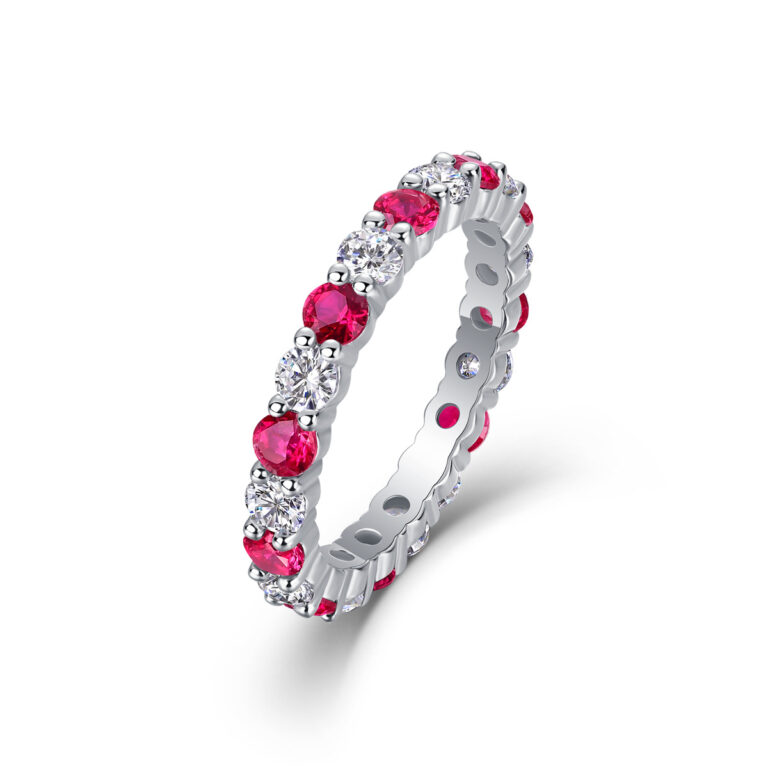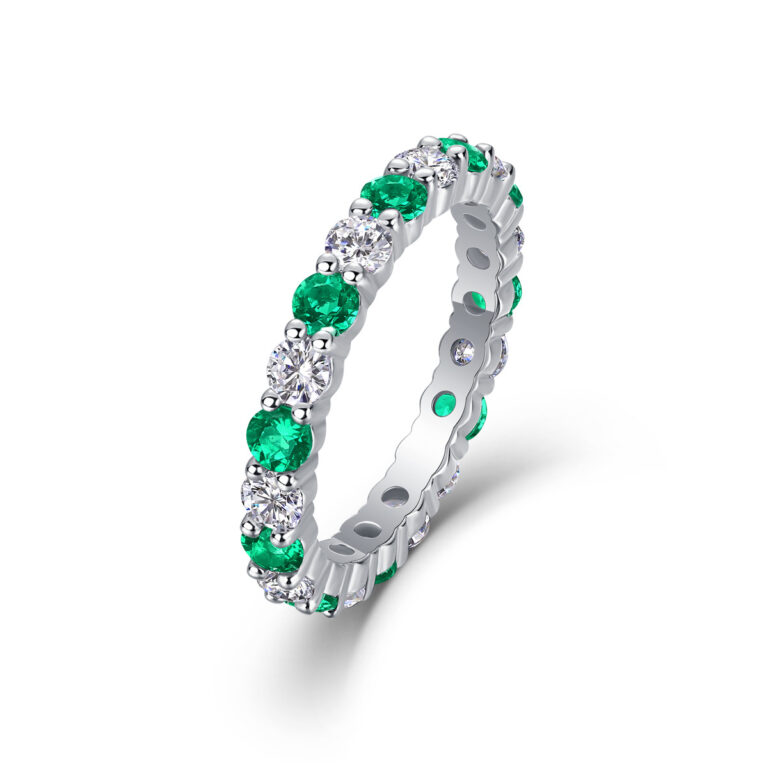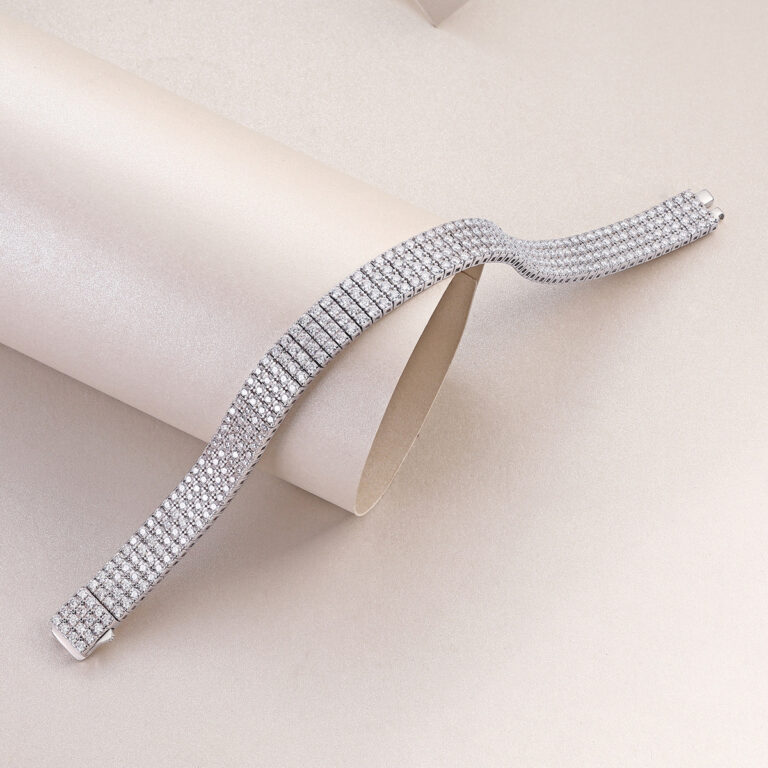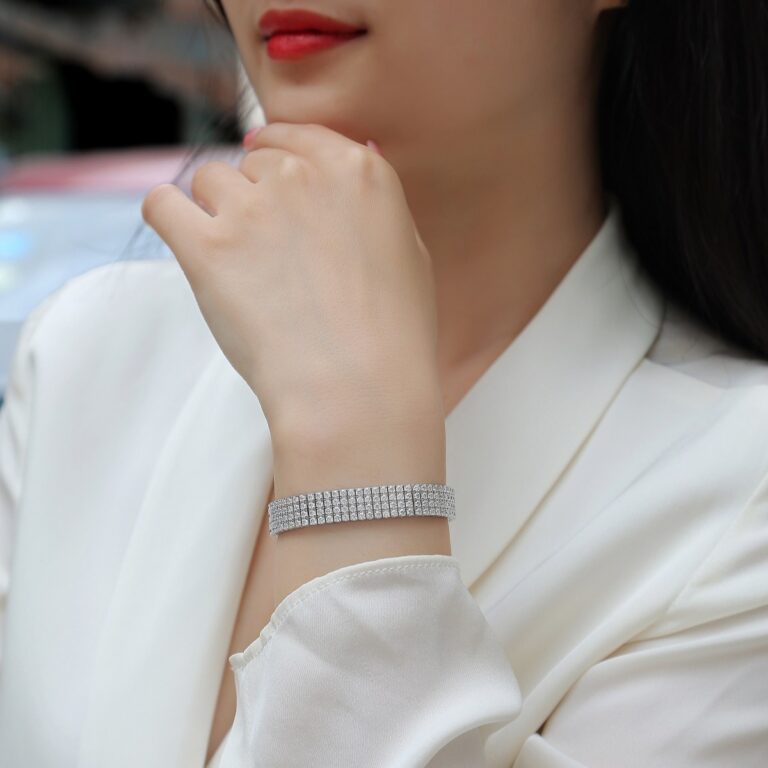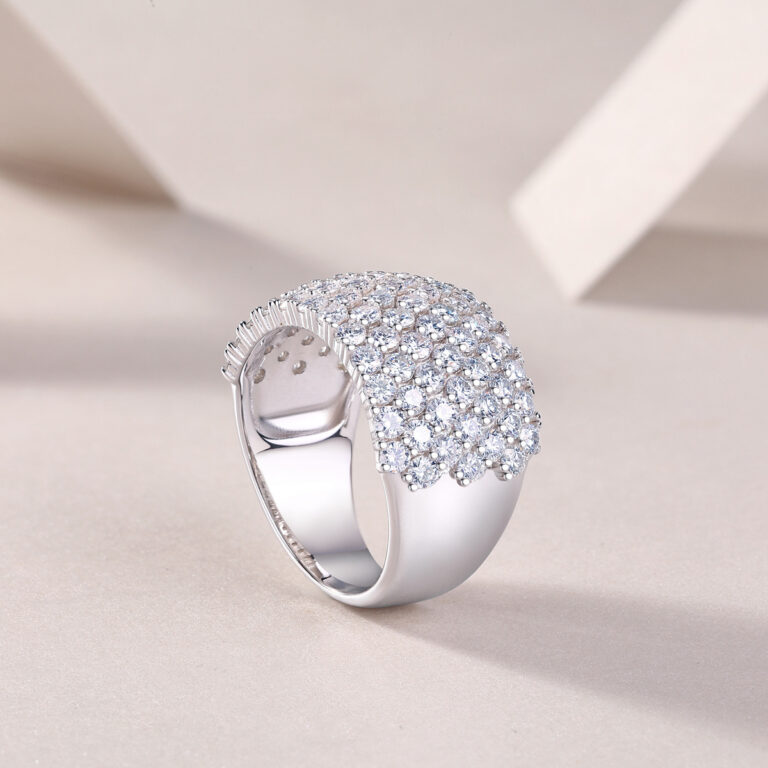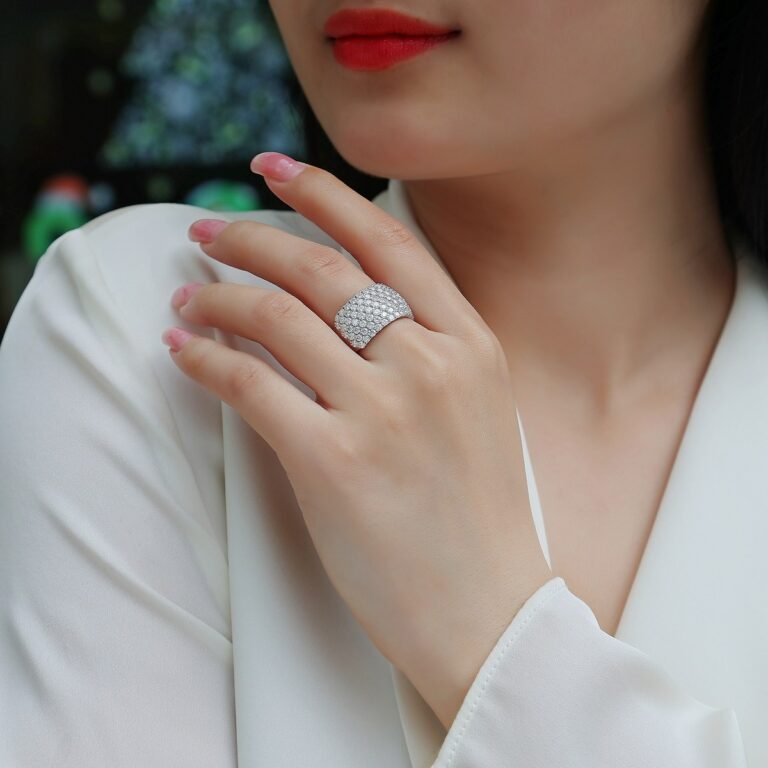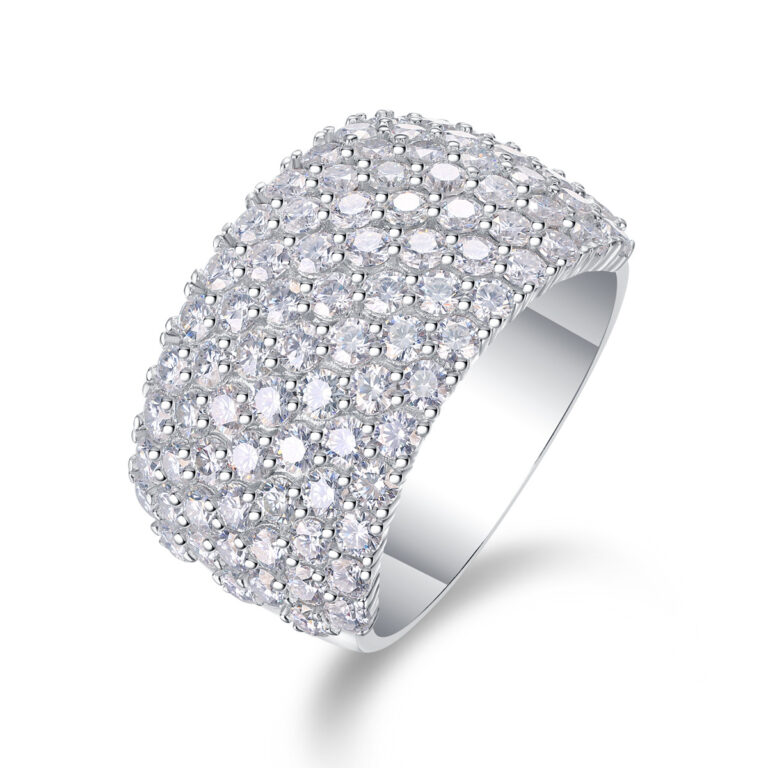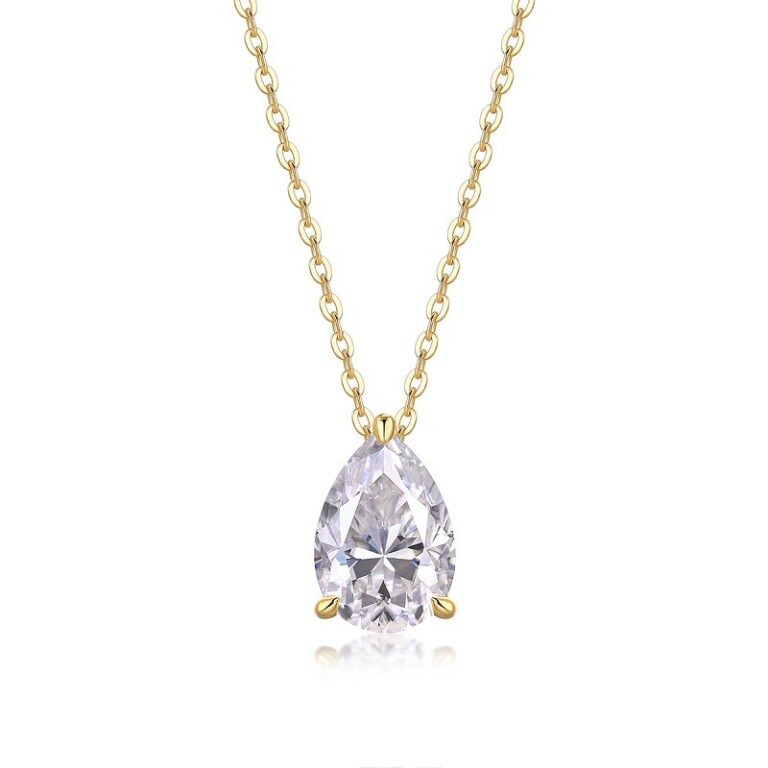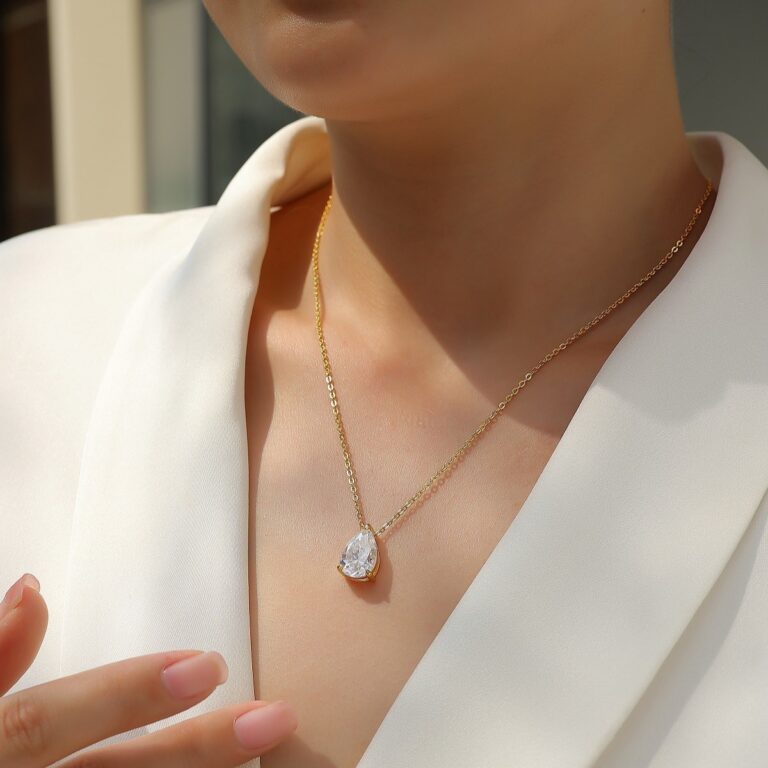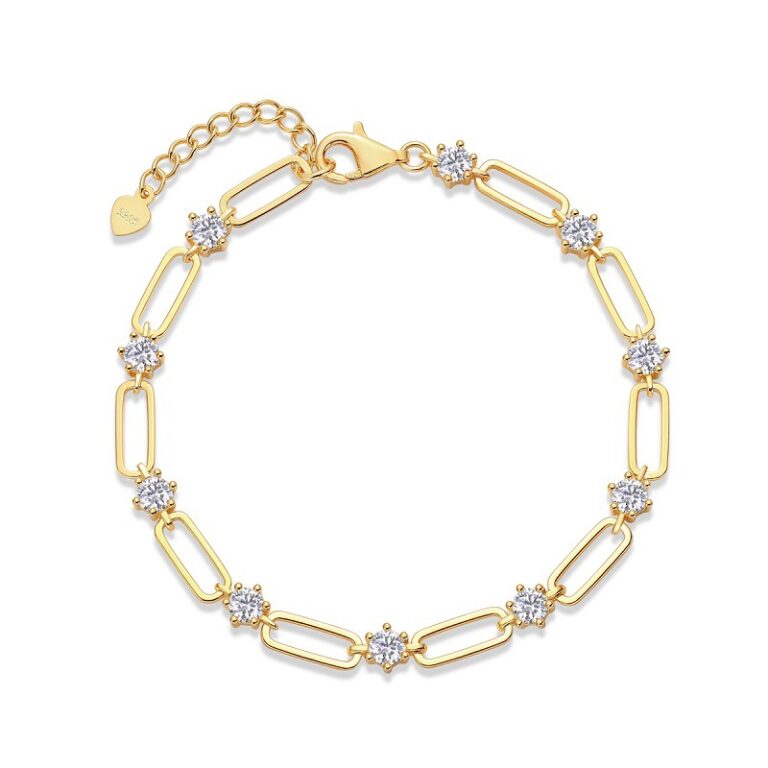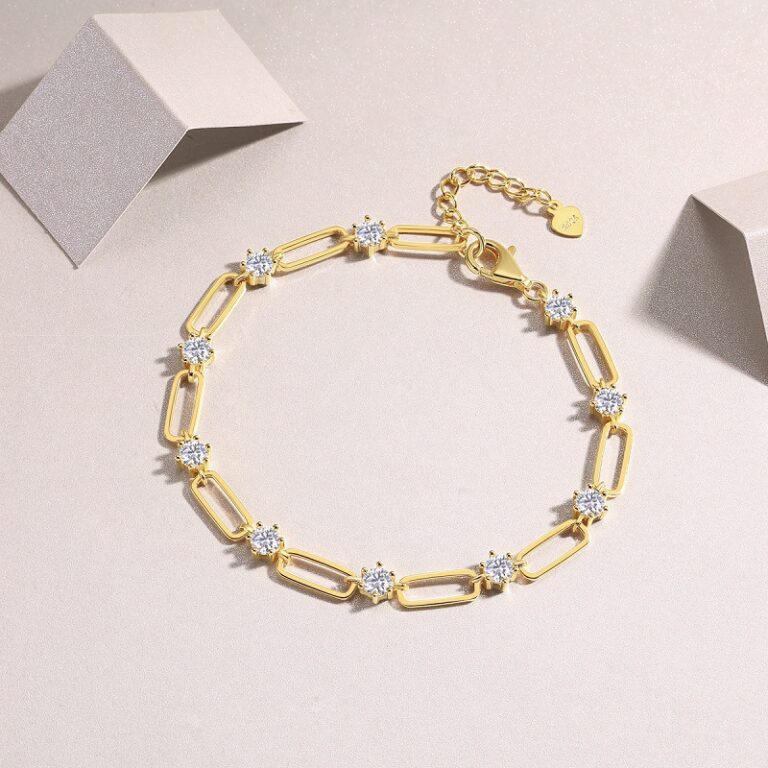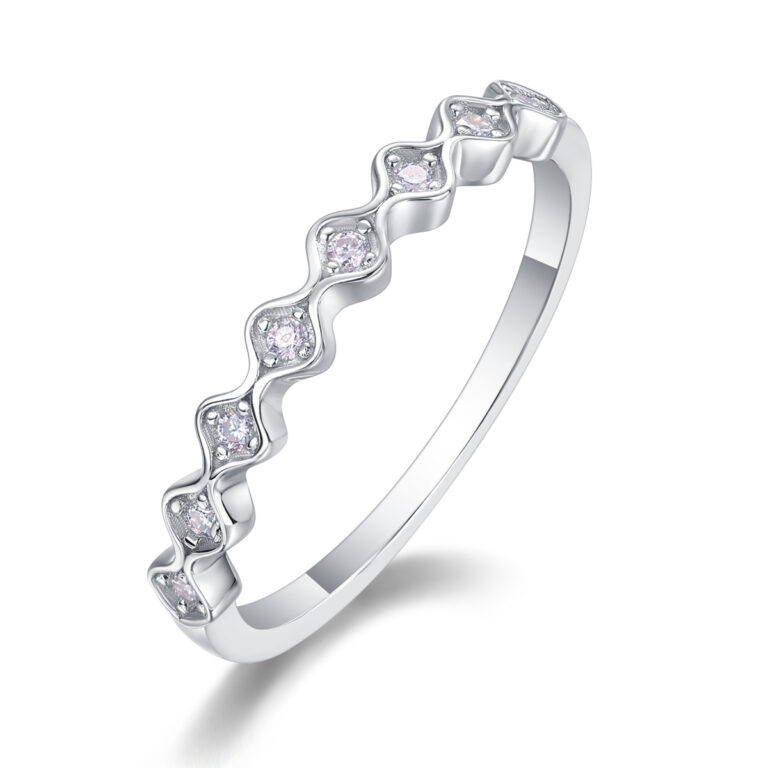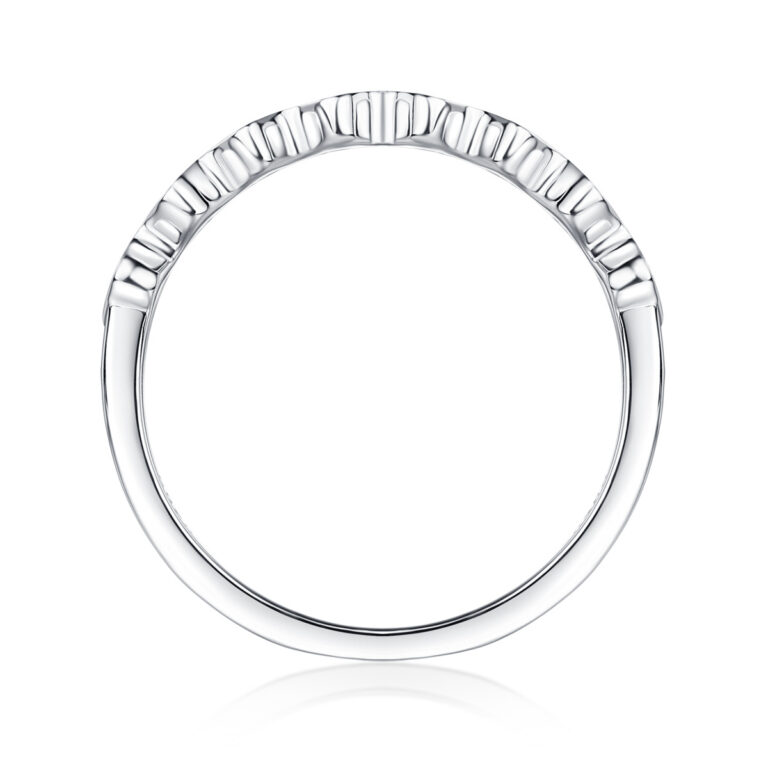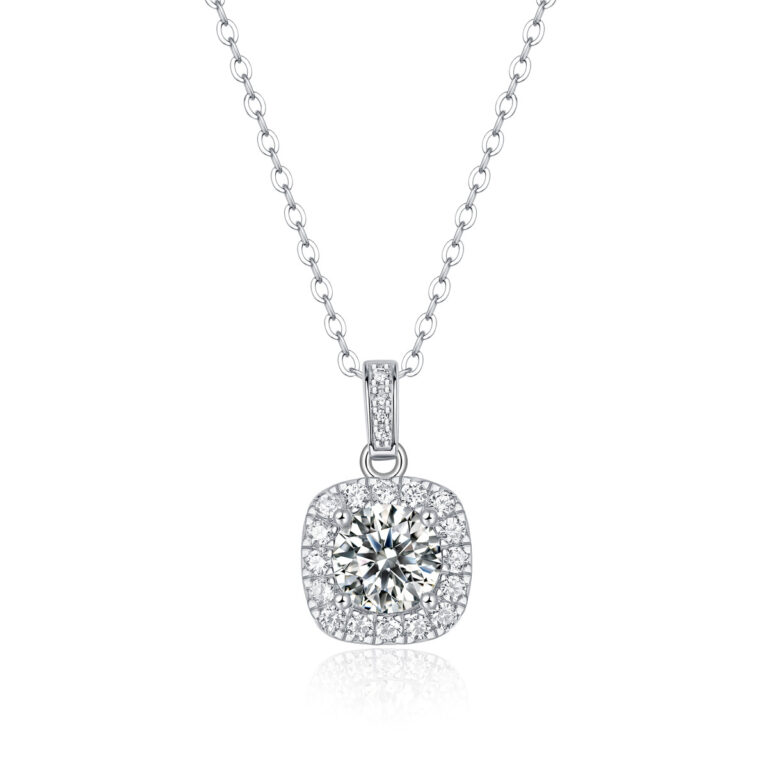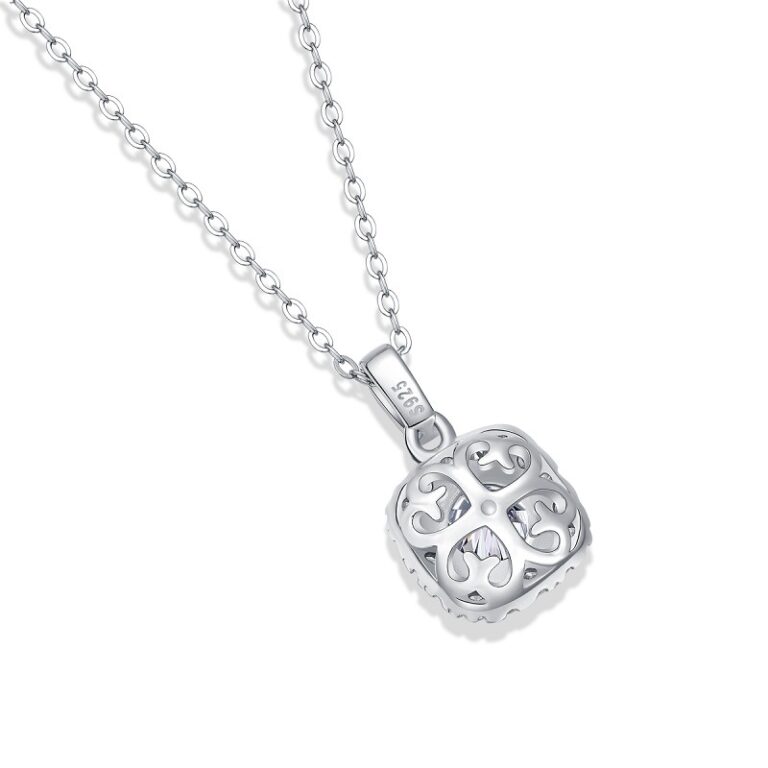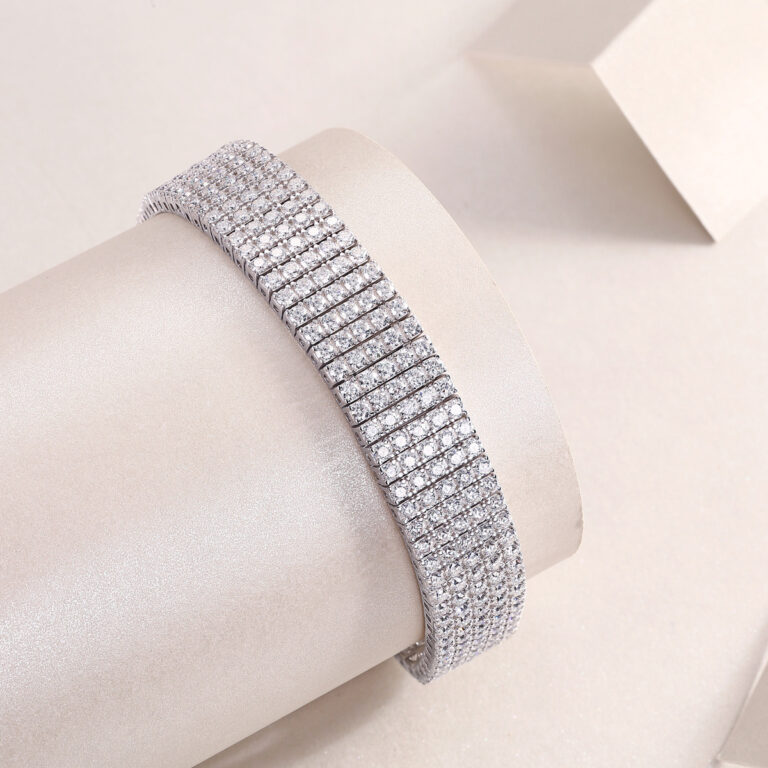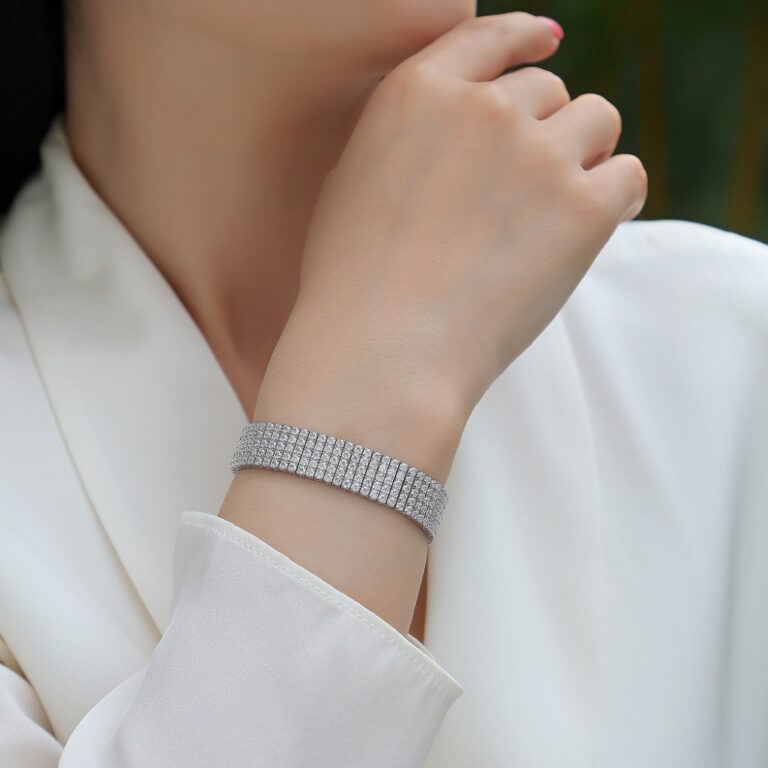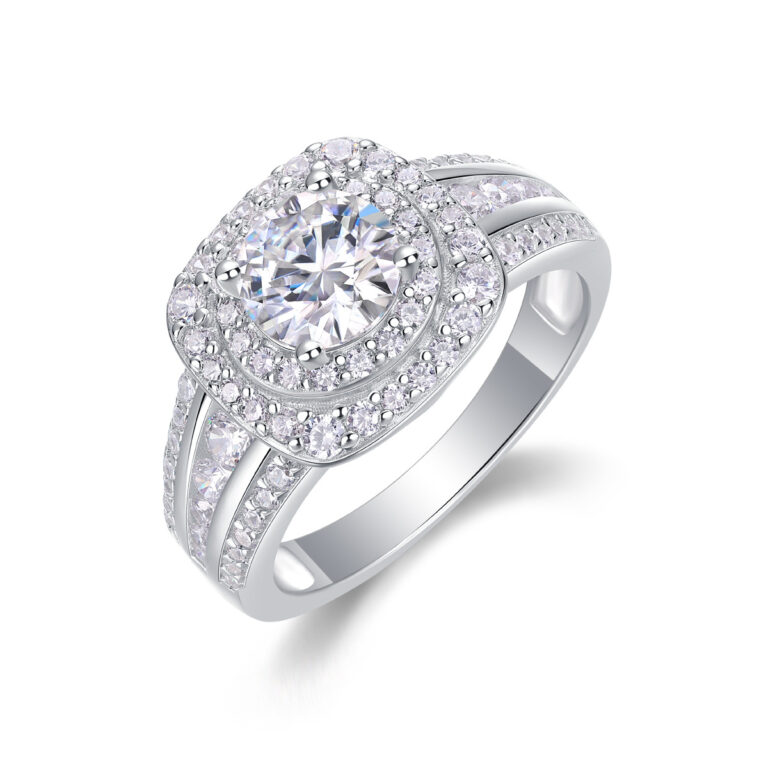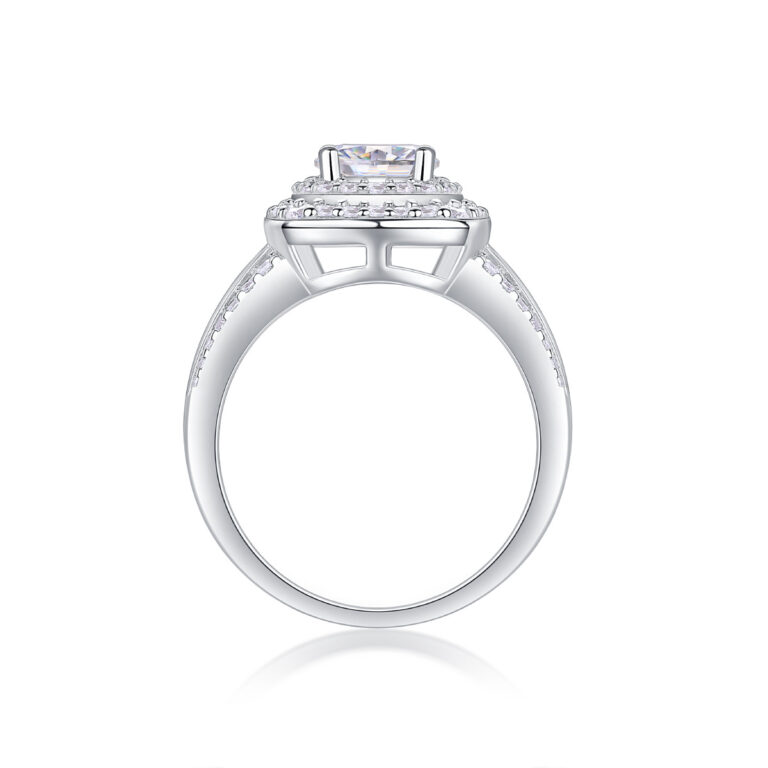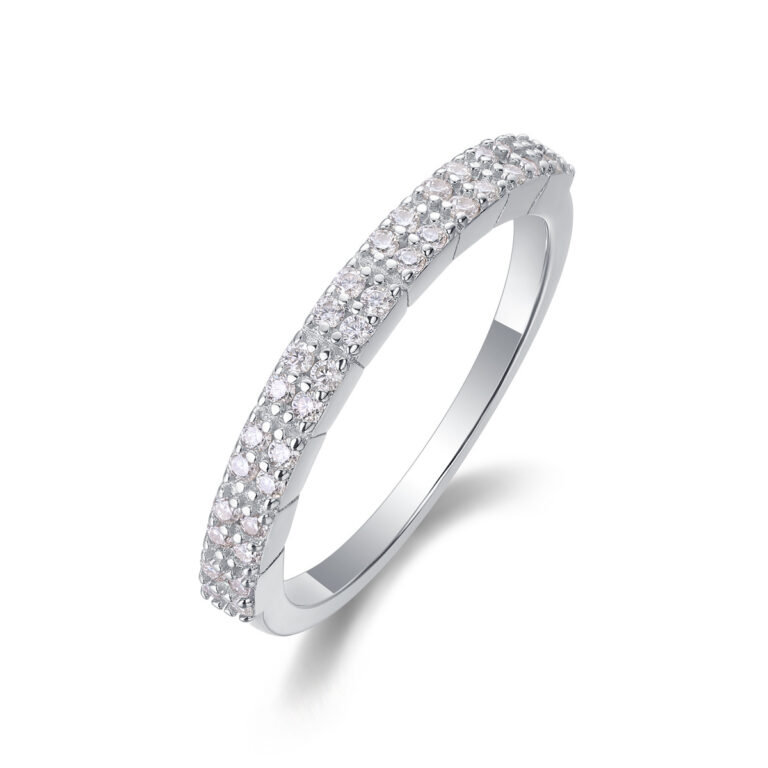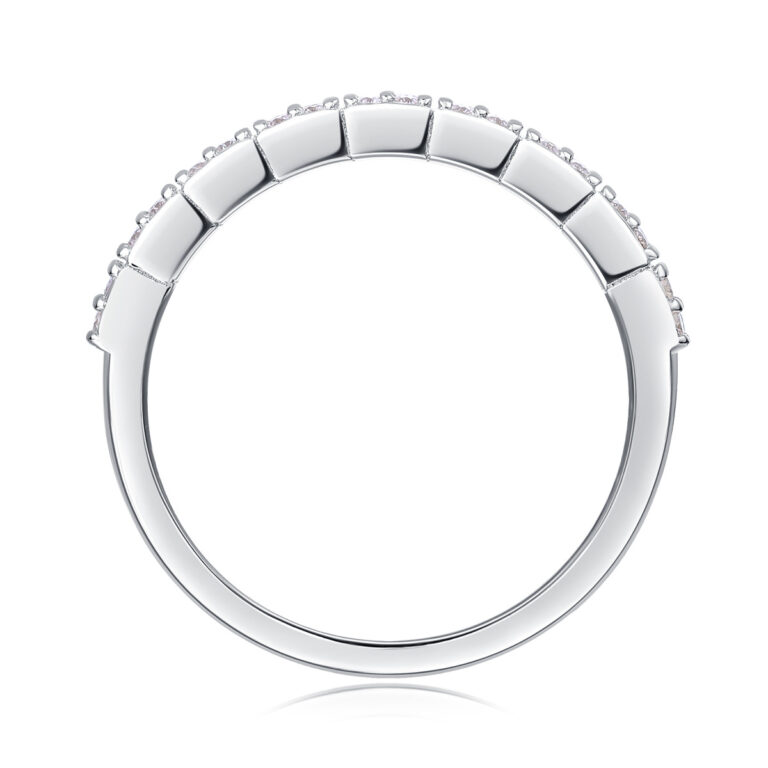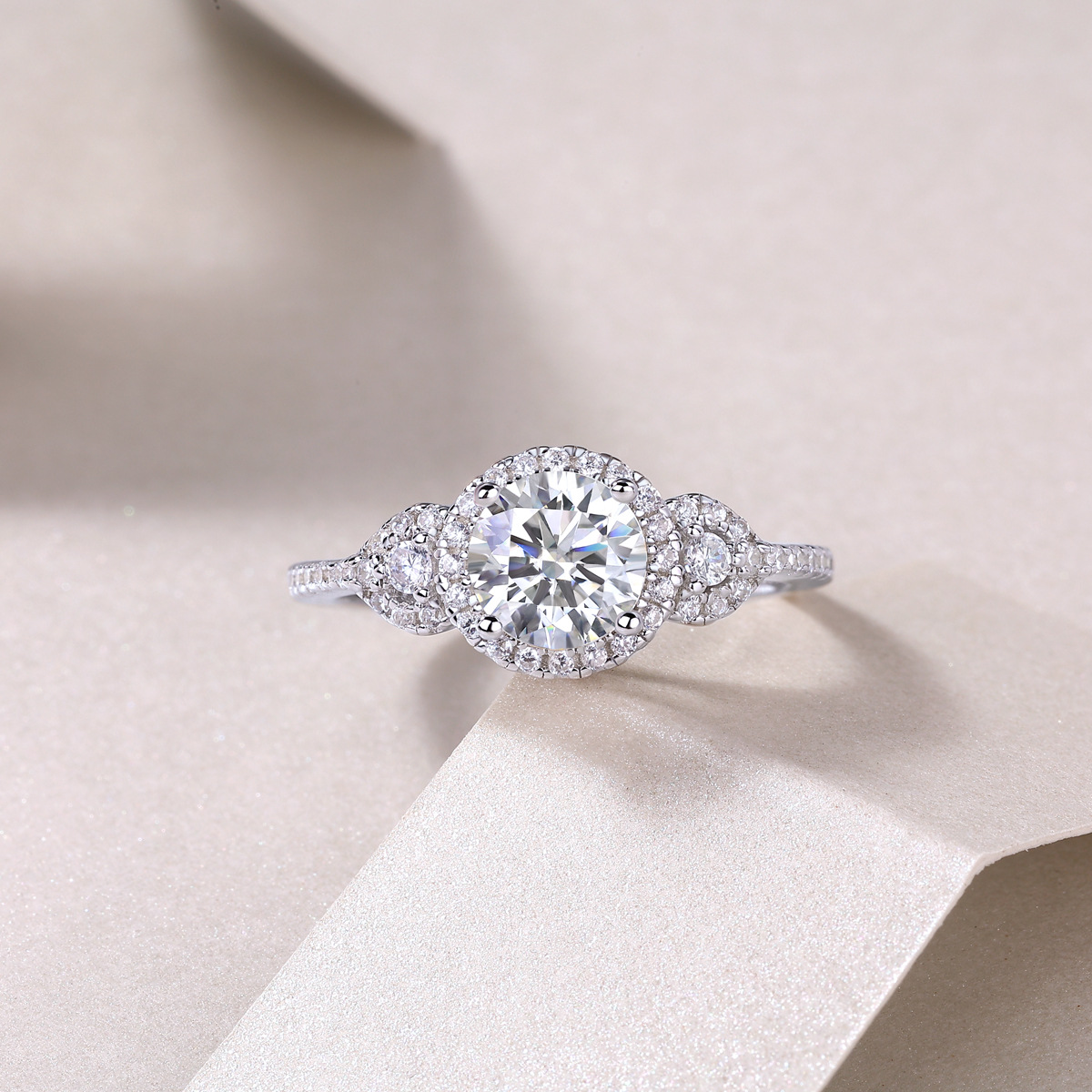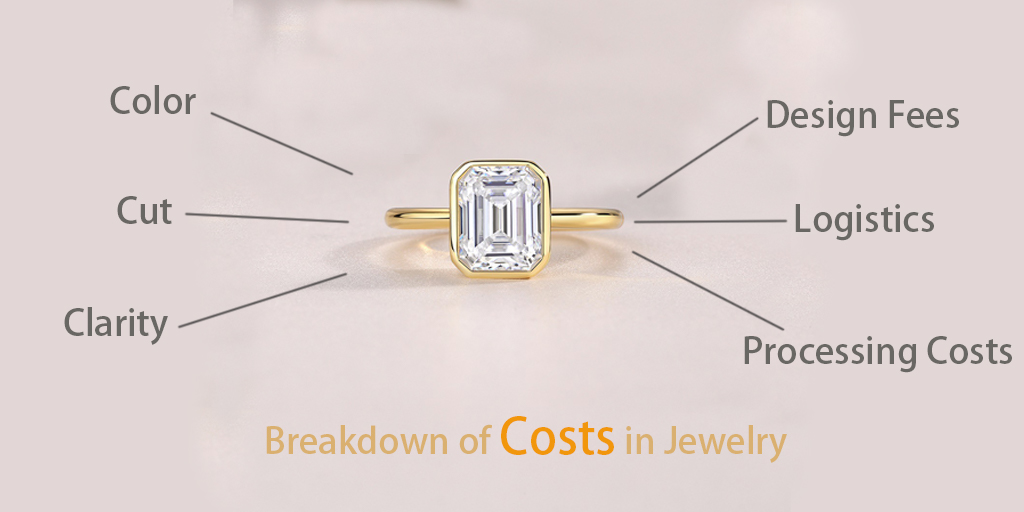When it comes to gemstones, their beauty often lies not just in their sparkle under natural light, but also in how they react under different lighting conditions. One such condition is ultraviolet light, commonly referred to as UV light. Under UV light, many gemstones exhibit fascinating fluorescence that is not visible under normal lighting. In this article, we’ll explore the phenomenon of fluorescence, specifically focusing on moissanite, and compare it to its more famous counterpart, the diamond.
What is Fluorescence and Why Does It Happen?
Fluorescence is a phenomenon where a material absorbs light at a specific wavelength (in this case, ultraviolet light) and then re-emits it at a different wavelength, usually in the visible spectrum. This causes the material to “glow” under UV light. The reason this happens lies in the atomic structure of the material.
When UV light, which has a shorter wavelength and higher energy than visible light, strikes a gemstone, it excites the electrons within the stone’s atomic structure. These electrons jump to a higher energy state, but they can’t stay there for long. As they return to their original state, they release the absorbed energy in the form of visible light, creating the glowing effect we see as fluorescence.
The specific color and intensity of the fluorescence depend on the chemical composition and structure of the gemstone. Different impurities or structural defects within the stone can lead to variations in fluorescence.
Moissanite Under UV Light: A Closer Look
Moissanite, a lab-created gemstone composed primarily of silicon carbide (SiC), is known for its brilliance and fire, often compared to that of a diamond. However, when it comes to fluorescence under UV light, moissanite behaves quite differently from diamonds.
In natural light, moissanite and diamonds can appear quite similar, with both stones exhibiting a high level of sparkle and brilliance. However, when placed under UV light, the differences become apparent.
Moissanite vs. Diamond Under UV Light
Diamonds, which are naturally formed from carbon, can exhibit a wide range of fluorescence colors under UV light, including blue, yellow, green, and even red, with blue being the most common.This variation is due to the different impurities and structural defects that occur during the diamond’s formation process in nature. No two natural diamonds are exactly alike, and this is reflected in their fluorescence.
On the other hand, moissanite, being a lab-created stone, has a more consistent chemical composition and structure. This consistency means that moissanite tends to exhibit a more uniform fluorescence under UV light. While diamonds can show a wide array of colors, moissanite typically displays a more subdued glow.
Factors Affecting Moissanite’s Fluorescence
Several factors can influence how moissanite reacts under UV light:
1. Purity of the Stone: The purer the moissanite, the less likely it is to fluoresce. Impurities within the stone can enhance its fluorescence, so higher-purity moissanite will generally glow less under UV light.
2. Color Grade: Moissanite comes in various color grades, and the higher the color grade (i.e., the more colorless the stone), the less fluorescence it will exhibit. Lower color grades, which may have a slight yellow or green tint, are more likely to show fluorescence.
3. UV Wavelength: The wavelength of the UV light also plays a role. Moissanite may not fluoresce under very short or very long wavelengths of UV light. The most common UV light used for testing gemstones is in the range of 254nm-365nm (long-wave UV), which is where moissanite is most likely to exhibit fluorescence.
Practical Observation: Moissanite Ring Under UV Light
To see this phenomenon in action, let’s take a closer look at a moissanite ring under both natural light and UV light. Under natural light, the moissanite stone will display its characteristic brilliance and fire, with flashes of rainbow colors as the light hits the facets. However, when the same ring is placed under UV light, the stone may exhibit a dazzling blue glow that was not present under natural light.
This glow is not similar to that of a diamond, but it adds an extra layer of intrigue to the moissanite. It’s a reminder that even lab-created gemstones like moissanite have their own unique characteristics that set them apart from natural stones.
Conclusion
Moissanite’s behavior under UV light is just one of the many fascinating aspects of this lab-created gemstone. While its fluorescence under UV light is different from that of a diamond, its consistent and subtle glow under UV light is a testament to its unique chemical composition and structure. Whether you’re a gemstone enthusiast or simply curious about the science behind these beautiful stones, observing moissanite under UV light offers a glimpse into the hidden world of fluorescence.
So, the next time you come across a moissanite ring or any other piece of moissanite jewelry, take a moment to view it under UV light. You might just discover a whole new dimension to its beauty.
P.S.
If you would like to observe how other gemstones behave under UV light, feel free to leave us a message. We will also be producing more videos showcasing gemstones under UV light for everyone to enjoy in the future.
